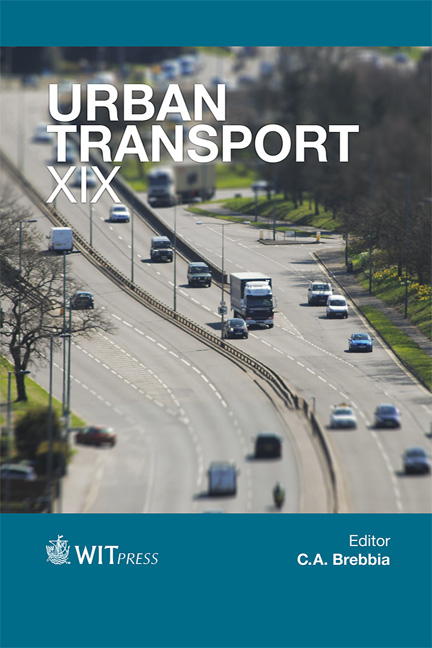Visual Perception Of The Roundabout In Old Age
Price
Free (open access)
Transaction
Volume
130
Pages
12
Page Range
721 - 732
Published
2013
Size
994 kb
Paper DOI
10.2495/UT130581
Copyright
WIT Press
Author(s)
G. Fancello, C. Pinna & P. Fadda
Abstract
In recent years, the behaviour of older drivers has become one of the main objectives of safety research and much attention has been focused on the perception of the driver. Several studies have shown that mental and physical conditions, driving habits and behaviour when performing certain manoeuvres differ with age. The mental and physical faculties of over 65-year olds and their ability to concentrate behind the wheel deteriorate more rapidly, with the result that there is a greater likelihood of them having an accident. It is for this reason that research in later years has focused primarily on identifying active safety measures to assist older drivers, aimed at facilitating certain tasks and improving their performance, so as to avoid mishaps on the road. These measures concern above all restrictions and limits, support and assistance, redesigning the road system, and in-vehicle driving aids. In this paper we have analysed the behaviour of elderly drivers while they go through a roundabout: we investigated their visual perception during driving, to assess which elements help drivers to cross the roundabout, and which have bad influences during guide (distractor signals). To evaluate the drivers’ perception we propose an index, based on frequency and length period observation, to assess stimulus generated by road: starting from Neisser Index, we propose an experimental index based on the complex structure of driver’s vision. A mobile eye tracker has been used both to define which elements drivers use during roundabout crossing and to measure the time period perception of each road and traffic element. Eleven older drivers are tested on a suburban roundabout: also eleven young people were tested to compare the results. Results confirm that elderly drivers are concentrated only on traffic flow arriving from the right arm of the roundabout and the vehicle in front: other elements on the roundabout have no influence on drivers’ behaviours. Keywords: older drivers, roundabout, visual perception.
Keywords
Keywords: older drivers, roundabout, visual perception.





